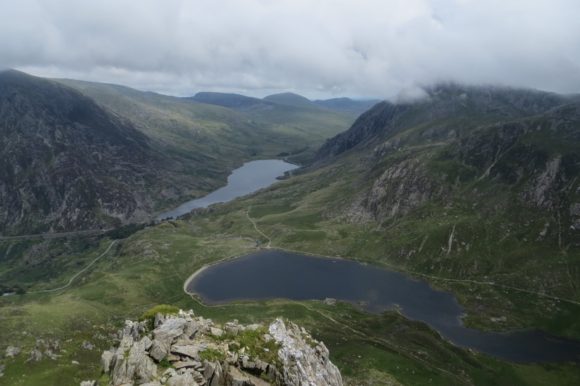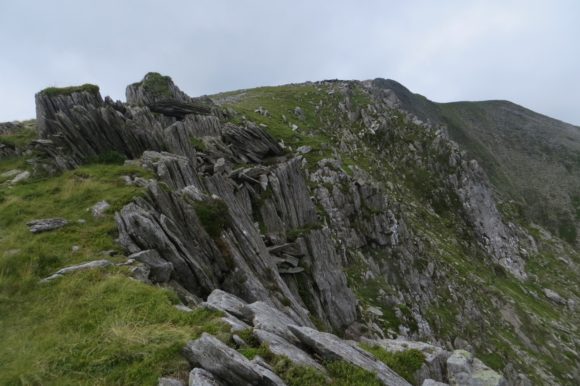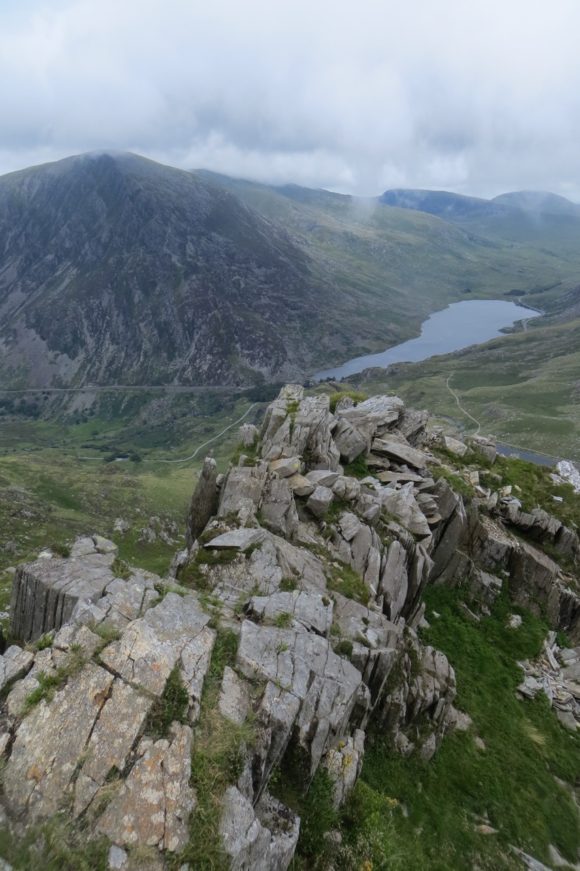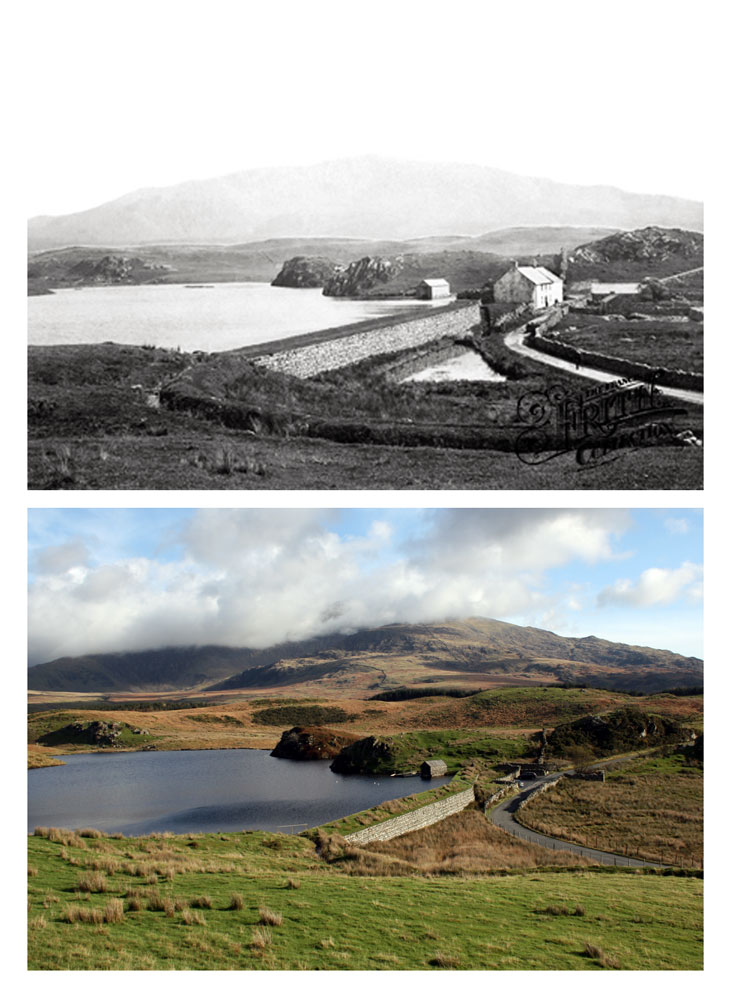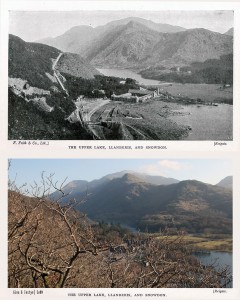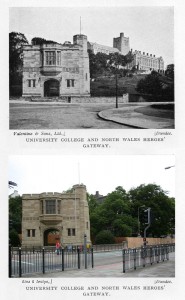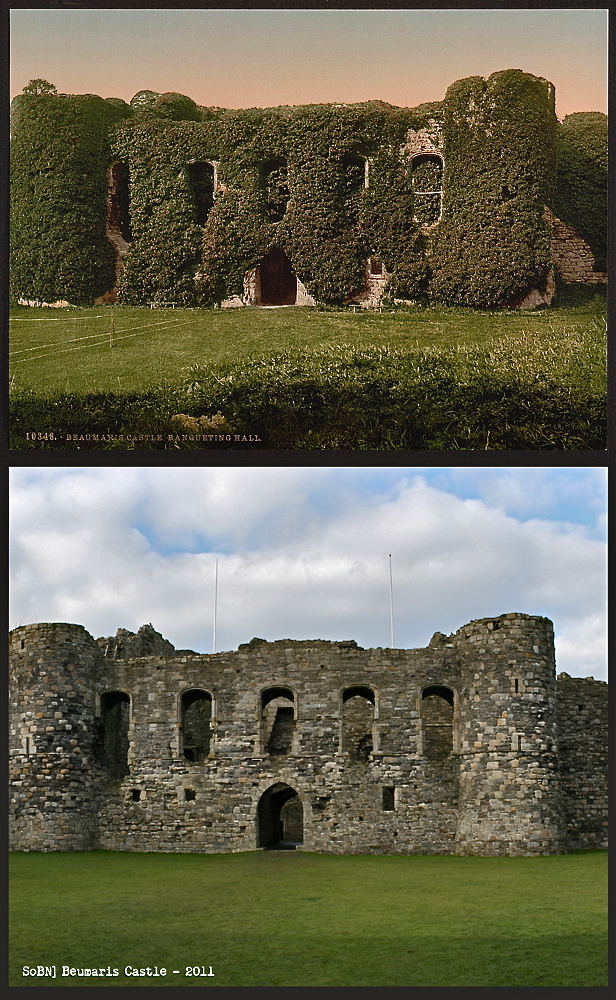
Beaumaris Castle
“The town is the capital of Anglesey. It has a promenade Pier (admission 2d.) and provides facilities for bathing, boating, bowls and golf. Near the Castle are the Corporation Baths. Mixed bathing is allowed.
The chief object of interest is Beaumaris Castle (admission 2d.), which no visitor should miss seeing. It covers a large extent, but is not of great height. It is now under the care of H.M. Office Works. There is an outer wall with ten low towers, and an advanced work called the Gunners’ Walk. On the outside of it’s walls are rings for mooring the vessels that came up to it by a marine canal. The main structure is nearly quadrangular in form, with a large round tower at each angle. The banqueting hall, the state rooms, the domestic apartments, and a small chapel reached by a wooden ladder near the site of the old racquet court, may all be distinctly traced.
The castle was built by Edward I, who then changed the name of the place from Bonover to Beaumaris, a French word descriptive of it’s pleasant situation on low ground. The only event of importance in the history of the Castle was it’s surrender to the Parliament in 1646.
The grounds are tastefully laid out and contain tennis courts.
The Church (Sunday services 8, 11, and 6:30; daily service, 10) was erected in the latter part of the thirteenth century, but the chancel dates only from the sixteenth century. It contains some ancient stalls, which finely carved misericords, monuments to members of the Bulkeley family (the best is in the vestry), a stone, on the south side of the communion table, in memory of the father of Sir Philip Sydney (d. 1563), and a tablet in memory of David Hughes, a native of the island, through whose beneficence the town possesses a Grammar School, erected in 1603, and Almshouses. The north door is secured by a stout wooden bar drawn from a cavity in the wall. (One of the two gates of the churchyard is kept unlocked for the admission of visitors.)
A curious custom, the origin of which in unknown, annually in November marks the close of the Anglesey Hunt. A quantiy of hot pennies is shoveled from the balcony of the Bulkeley Arms Hotel into the waiting crowd below, and they scramble for the coins to the accompaniment of music played by a local band.”
Banks.-Lloyds, National Provincial, Midland.
Concerts and entertainments in the Pier Pavilion.
Early Closing Day –Â Wednesday
Ferry.-The Bangor Corporation steamer plies houerly between Bangor pier and Beaumaris pier, Fare, 8d.; 1s Return (children, 4d and 6d. Weekly, 4s. (children 2s.).
Golf.-A capital nine-hole course about a mile and a half fom the town. Fees, 2/- day 10/- week.
Lawn Tennis, Bowls etc in the Castle Pleasure Grounds
Motor-buses run from Bangor Station several times daily all the year round via Garth Ferry and Menai Bridge. The buses also run between Beaumaris and Llangoed.
There is a steam ferry between Beaumaris and Garth Point, Bangor, in the summer months.
The Liverpool and North Wales Steamers call daily during the season.
Population.-Â 1.839“
Beaumaris is still a lovely wee town, with a very beautiful promenade and an epic vista of the Snowdonia mountains over the Menai Straits. The castle has always fascinated me, as it’s moat still pretty much surrounds the castle today, which gives it a lovely feel. I do love the old retro photograph of the castle with all the Ivy on it.
